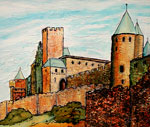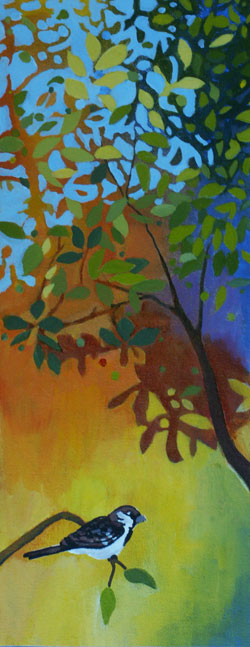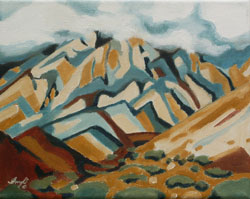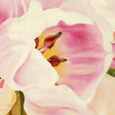There are 4 main types of paint that are popular these days. Oil, heavy bodied acrylic, fluid acrylic, and watercolour. Here are some of the basic differences.
1. Oil: The slow drying time of oils allows for beautiful blending and lovely soft edged gradations. It can be used thickly (called impasto) with luscious brush strokes showing lots of texture, or more thinly, with a smooth finish. I choose the water mixable oil. This paint responds to water while wet, so you can clean up with water instead of turpentine. Once dry, it is chemically identical to regular oils. The brand I use has the same drying time as regular oils too. Oil paints do have rules that must be followed so that the paint does not crackle after it is dry.
2. Heavy bodied acrylic: This paint will do the thick and textured brush strokes similar to oil. It is formulated to resist thinning with water. It dries much more quickly than oils, although very thick applications can still take hours, or even overnight. Recently manufacturers have come out with a variety of acrylic paints that have different drying properties, including some that are a bit slower drying to allow for blending of colours. Or you can buy an acrylic medium to extend drying time just when you want it.
3. Fluid acrylic: This paint thins well with water, while maintaining a rich pigment load for bright colour. That makes it perfect for wet and wild applications. If thinned enough with water, it will look identical to watercolour. If used in the consistency it comes out of the bottle, it can look like a smoothly finished oil painting. The main difference between it and watercolour is that when the fluid acrylic is dry, it no longer reactivates with water. This makes layering of colour (glazing) much easier.
4. Watercolour: Traditionally used in a delicate or pale colour manner, today’s watercolour paints have enough pigment load to do both rich and dark colours if desired. Watercolour in a painting reactivates when rewet, making lifting techniques possible. Lifting is used not only for correcting, but for beautiful painting effects as well. And the flow of watercolour paint placed into a wet area on the watercolour paper can delight both artist and art lover.
That’s a really brief summary. When new students ask me which type of paint to buy, I suggest that they go to some local art galleries, and see what type of paintings please their eye. Each type has both advantages and disadvantages, its own joys and challenges, and it’s more important to love the effects that you see in a certain paint type, than to worry about rumours of one being easier or harder to learn.
Your comments welcome.




